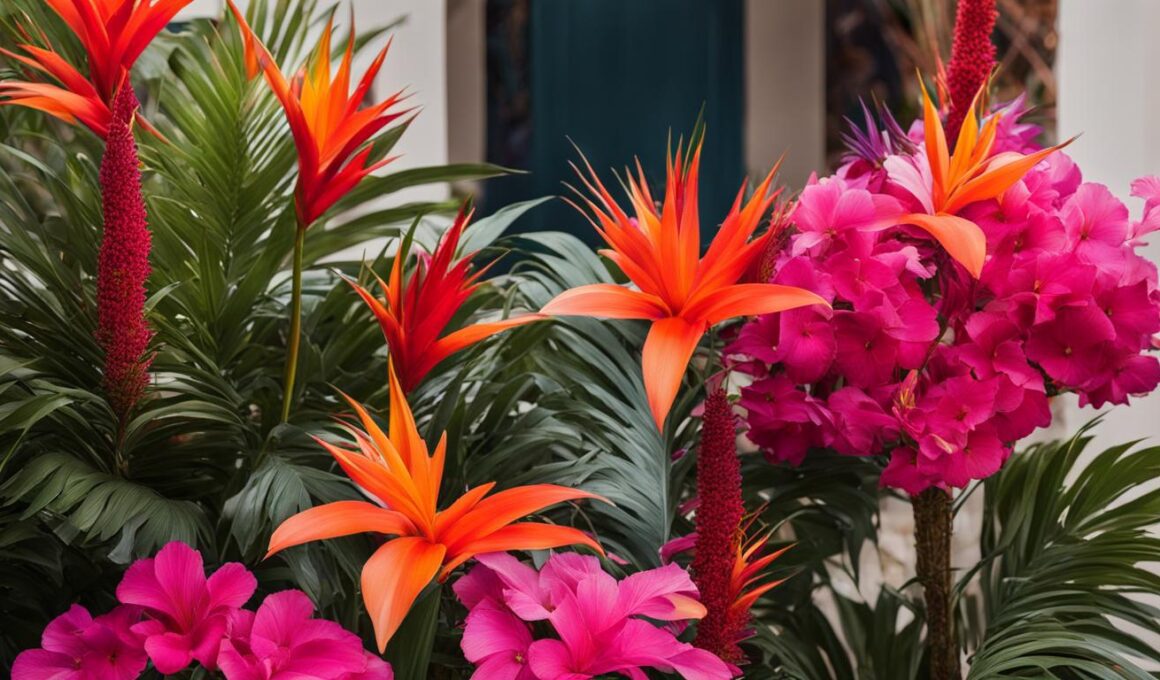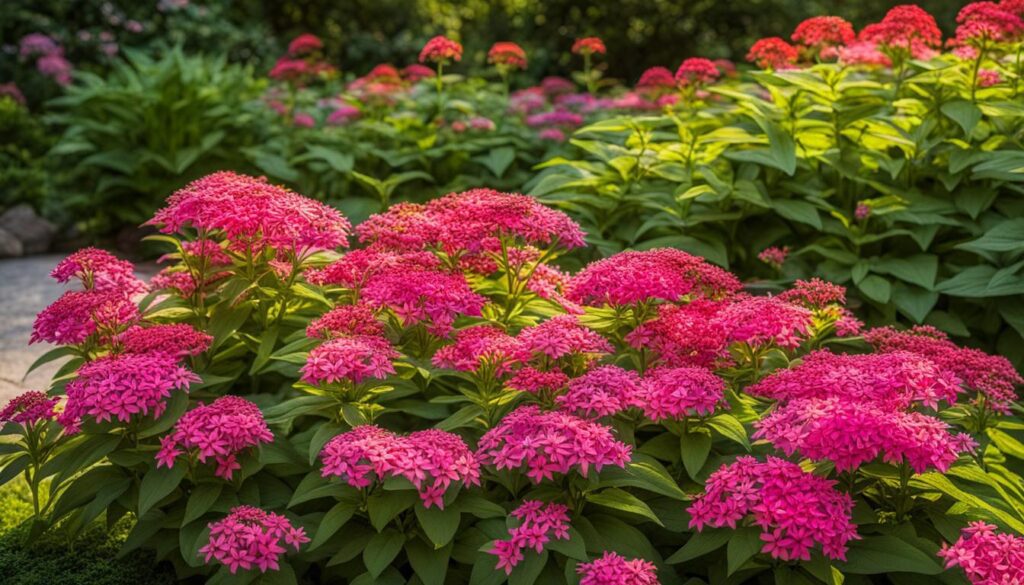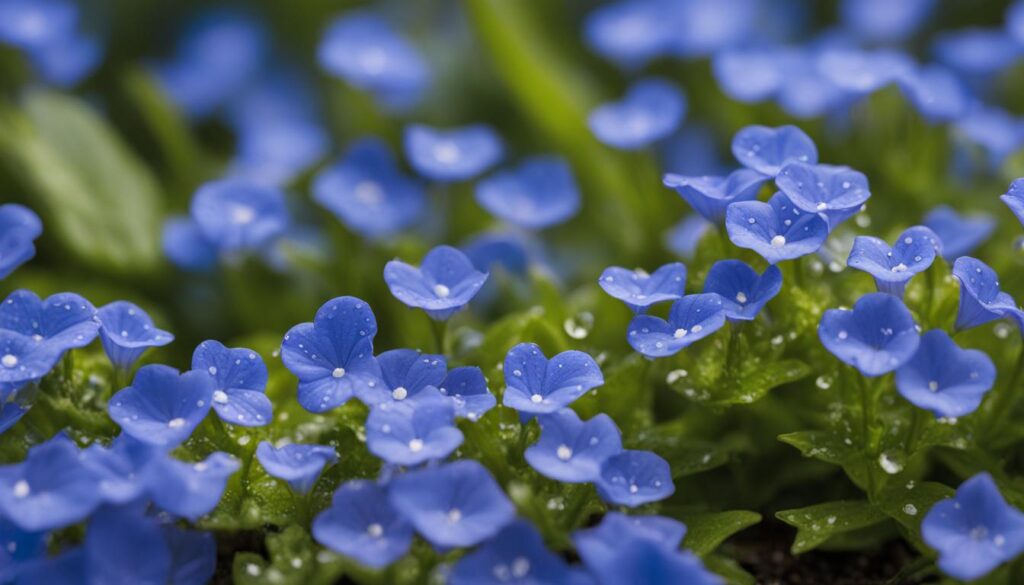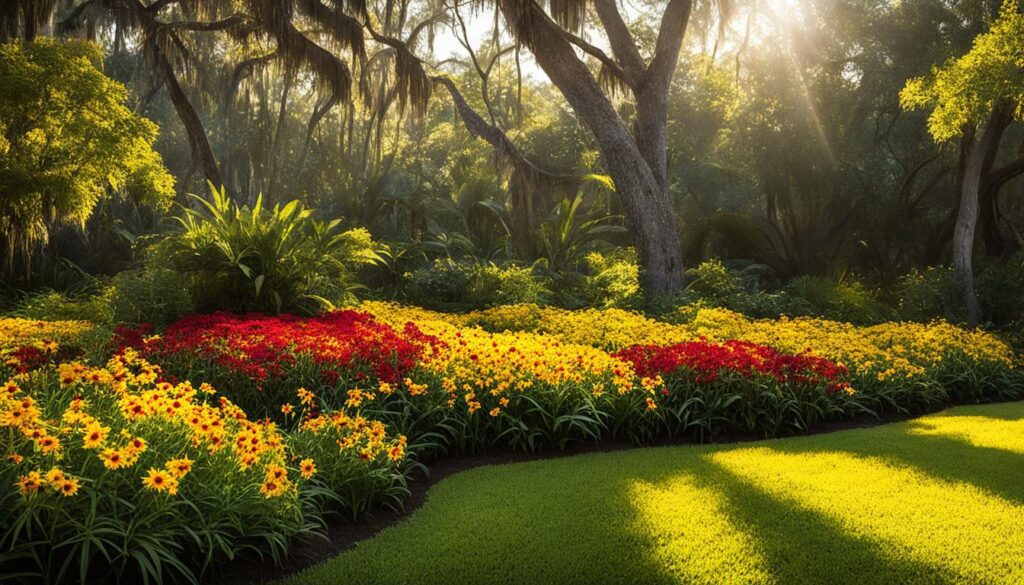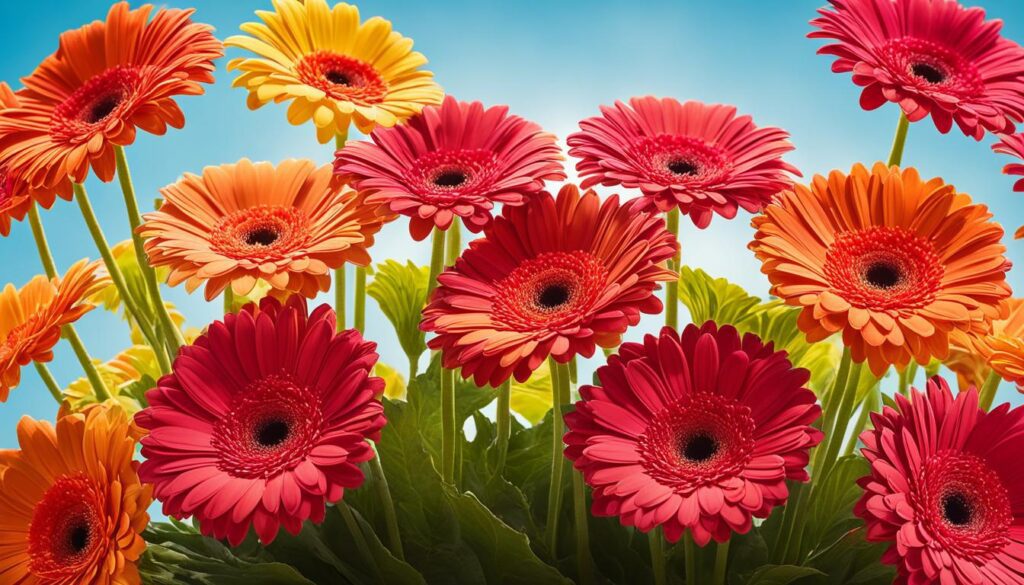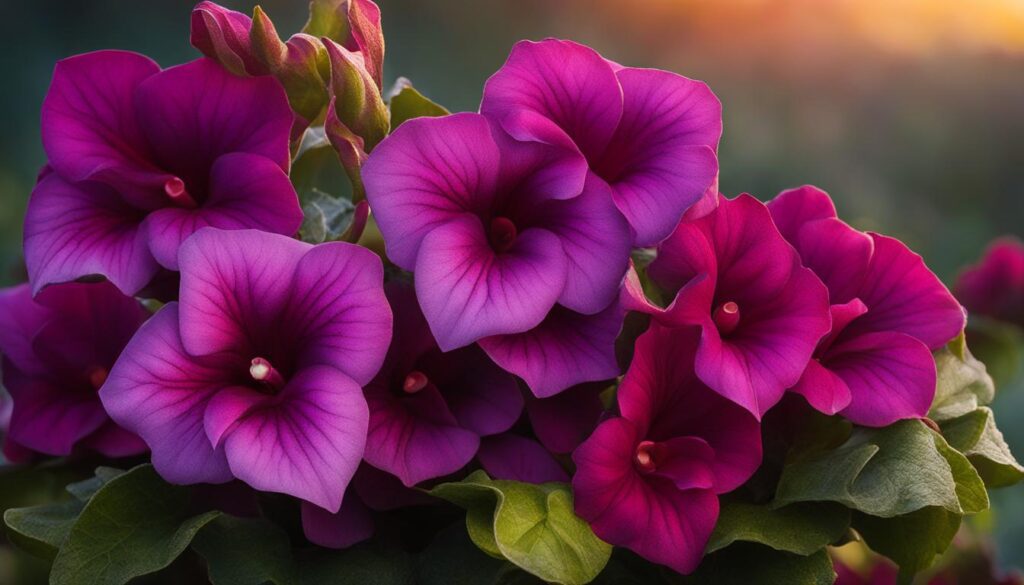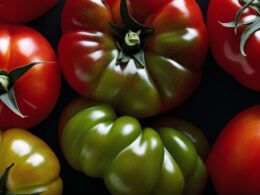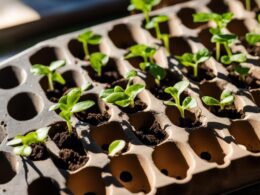When you immerse yourself in the world of Florida gardening, you’re signing up for a canvas dotted with vibrant blooms that encapsulate the essence of the Sunshine State. The key to achieving garden beautification under the sultry southern sky is to prioritize heat-tolerant flowers, which stand resilient in the face of Florida’s sweltering summers. From the dynamic display of perennial and annual blooms to the quintessential Florida-friendly flora, your garden can become a hub of year-round color and life.
Ensuring your outdoor space is graced with florals that not only survive but thrive, requires an infusion of species well-adapted to local conditions. Whether you’re a seasoned green thumb or a budding horticulturist, selecting the right blossoms will transition your garden from simply green to fantastically lush.
Prepare to delve into a curated list of botanical standouts that promise low maintenance yet high impact, making your gardening journey in Florida not just a possibility, but a blooming success.
Pentas: A Pollinator’s Paradise
Imagine stepping into your Florida garden to find a swarm of activity, a buzz of life that centers around the vibrant clusters of Pentas, your garden variety superhero for a low-maintenance, high-impact space. These Florida blooms are more than just a pretty sight; they are the cornerstone of butterfly gardens, attracting a flurry of wings including the mesmerizing zebra longwing, Florida’s state butterfly. Let’s explore why Pentas should be your top pick for creating a pollinator’s haven in Florida landscapes.
Plant Profile and Growth Habits
Pentas, known for their resilience, are the perfect fit for Florida’s sometimes tough climate. The plant flaunts red, pink, lavender, or white flowers, offering a selection of sizes suitable for every gardener. Whether you opt for the charming dwarf forms that tuck neatly into groundcovers and hanging baskets, or the majestic full-sized varieties that reach for the skies, Pentas stand as a testament to the diversity of Florida’s botanical offerings. They are perennial plants that establish themselves firmly, even in the sandy soils characteristic of the region.
Butterfly and Hummingbird Attraction
Your garden can become a pit-stop for the beautiful zebra longwing as Pentas are renowned for being one of the most effective hummingbird attractants. The consistent blooms act like a beacon to these pollinators, infusing your garden with a lively dance of fluttering and feeding. Envision your backyard as a canvas where the Florida state butterfly and other pollinators paint a moving picture of life and vitality, thanks to the allure of Pontas flowers.
Care Tips for Pentas
To ensure your Pentas thrive with minimal garden maintenance, these robust florals benefit from regular feeds with slow-release fertilizer—a few times a year should suffice. They bask in full sun but will also flourish in part shade, proving their versatility. Deep watering during dry spells fosters resilient blooms, allowing Pentas to stand tall against moderate drought. Suitable for container gardens and expansive landscapes alike, Pentas plants are a prime choice for any green-thumbed individual eager to enhance their garden with ease and sustainability in the varied environments of North, Central, and South Florida.
Evolvulus: The True-Blue Florida Groundcover
When you’re plotting the layout of your Florida garden, consider incorporating Evolvulus, also known colloquially as Blue Daze. This exceptional groundcover plant boasts true-blue flowers—a unique and treasured hue in the realm of flora. Its ability to maintain dazzling blooms while requiring minimal water once established positions it as an asset to any drought-prone landscape.
As you meander through your morning garden, the luminous blue petals offer a serene greeting, with blooms unfurling daily to catch the early sun. Evolvulus is a stellar choice for creating visual softness along edges or spilling them over the sides of containers for a whimsical touch. Despite the midday retreat of its flowers, your early hours are rewarded with a spectacle of blue that rivals the sky itself.
This low-growing treasure is not only about good looks; it packs a punch of resilience, growing to 6 inches tall and spreading 12 to 18 inches wide. The silvery-green foliage is a calming backdrop to the vibrant blooms, making it an essential coverage for empty patches or as a tapestry beneath taller plants.
Your commitment to adding drought-tolerant flora like Evolvulus, with its easy-care routine, not only conserves water but also grants effortless elegance to your garden array. So, if you’re seeking a groundcover to provide beauty without the fuss in a demanding climate, set your sights on the alluring Blue Daze. With its morning symphony of blue, it’s a plant that harmonizes perfectly with the Florida lifestyle.
Coreopsis: Florida’s Sunny State Flower
As gardening enthusiasts in Florida, you’re likely familiar with the sunny disposition of Coreopsis, also known as the state flower of Florida. This delightful genus is a staple in Florida gardens thanks to its vibrant, daisy-shaped flowers and prolonged blooming season, making it an ideal garden bed accent as well as a perfect fit for container gardening.
Coreopsis comes in an impressive medley of styles and hues. With easy-care perennials like these adding a splash of color to your home landscape, let’s take a closer look at what makes Coreopsis varieties a beloved choice among Florida gardeners.
Types and Colors of Coreopsis
With a palette stretching from the traditional golden-yellow to striking shades of orange, red, and pink, Coreopsis provides a charming spectrum of options for your garden. Plant breeders have successfully developed varieties with both single and double blooms, which not only attract an abundance of butterflies but also serve as cheerful focal points in any setting.
Drought Tolerance and Bloom Times
One of the most compelling features of Coreopsis is its remarkable ability to withstand dry conditions once established. This drought-resistant trait solidifies Coreopsis as a prime fixture in Florida gardens, where they’re known for their prolonged blooming periods. Depending on the variety, some Coreopsis will grace your garden with their presence from spring into the fall, rewarding you with a burst of color that persists through the seasons.
Container Gardening with Coreopsis
For those looking to decorate patios, balconies, or even smaller spaces, Coreopsis is equally at home within containers. Whether as annuals in the southern regions or short-lived perennials in the north, these versatile flowers excel in both garden beds and pots. Easy to care for and endlessly delightful, Coreopsis plants ensure that anywhere can become a showcase of natural beauty.
Gerbera: Blooming Beauty in the Sunshine State
Florida’s gardens become a tapestry of color with the addition of the exquisite Gerbera, especially the Garvinea collection. These vibrant flowers are not only a feast for the eyes but also serve as an invitation to a host of pollinators, making them an indispensable asset for anyone wishing to create a pollinator-friendly environment.
Whether your garden is drenched in the warm sunlight of South Florida or enjoys the milder embrace of the North, Gerberas from the Garvinea collection adapt beautifully, displaying their rainbow of hues all year in the South and from spring through fall in the North. Let’s adorn your garden spaces with these rounded beauties and witness how they transform landscapes and attract a parade of butterflies and bees.
The resilience of these flowers makes them a top choice for both garden beds and container arrangements. Here are a few tips for ensuring that your Gerberas continue to flourish:
- Position your Gerberas where they can soak up the sun or enjoy partial shade, as they are versatile in their light needs.
- Ensure the soil is moist yet well-drained to provide the ideal growing conditions these plants love.
- During dry spells, don’t hesitate to water your Gerberas to maintain their lustrous appearance.
- Feed them with a regular dose of fertilizer in spring or summer to encourage a bountiful display of their large, striking blooms.
By incorporating the Garvinea Gerbera into your garden, you’re choosing not just for its undeniable charm, but for a plant that performs reliably in Florida’s diverse climate. Revel in the spectrum of colors and watch as your garden becomes a living canvas, full of activity and beauty throughout the seasons.
Bolivian Sunset Gloxinia: Winter Color Explosion
Envision a burst of warm color amidst the mild winters of Central and South Florida gardens with Gloxinia sylvatica, better known as Bolivian Sunset Gloxinia. These stunning, non-invasive plants bring a spectacular show of vivid orange winter blooms when most foliage is subdued. Inviting this radiant flora into your garden or home is akin to capturing a slice of sunset, illuminating your environment during the shorter days of the year.
Throughout the cooler seasons, the Bolivian Sunset Gloxinia becomes an enchanting garden focal point due to its lush, spreading clumps and contrasting dark foliage. This contrast creates a remarkable visual allure, establishing itself as a jewel among indoor ornamentals and outdoor botanical collections alike.
Optimal Growing Conditions for Gloxinia
Your Bolivian Sunset Gloxinia thrives under specific conditions that mimic its native habitat. Favorable growth is observed when these plants are placed in areas that offer part shade throughout the day. These winter-blooming delights prefer enriched, well-draining soil that remains consistently moist, providing a perfect setting for robust growth and flourishing blooms.
Florida gardeners will find that Gloxinia sylvatica enjoys the region’s balmy climate, revealing its full potential as a winter spectacle. It can tolerate the sun but ensure that the soil doesn’t dry out, maintaining its vibrancy and health. You can enhance its growth further by applying a layer of mulch to retain moisture and protect its roots in the variable Florida weather.
Using Gloxinia for Indoor and Outdoor Decors
Whether you incorporate Bolivian Sunset Gloxinia into your garden beds or bring its warmth inside, its adaptability makes it a favored choice for both settings. As an indoor ornamental, provide the Gloxinia with bright, indirect light where it can bask in the gentle rays without scorched leaves. It can grace side tables or be the centerpiece that commands attention during the holiday months.
Outdoors, position Gloxinia sylvatica as a conversation-starting garden focal point or line walkways and patios, where its boldness can be admired up close. Pair it with complementary foliage that accentuates its orange blossoms, or let it stand solo where its winter blooms can be appreciated in their full glory. No matter the setting, the Bolivian Sunset Gloxinia infuses life into every space, promising a lively and vibrant allure throughout Florida’s winter months.
Blue Salvia: A Magnet for Floridian Wildlife
Brighten your Florida landscape with the captivating charm of Blue Salvia, a plant valued not only for its visual appeal but also for its role as a haven for local wildlife. As you embark on the gratifying journey of Blue Salvia maintenance, you’ll soon discover this plant’s remarkable resilience and ability to thrive in some of the state’s toughest garden spots.
Maintaining and Cultivating Blue Salvia
One of the ultimate examples of drought-resistant flora, Blue Salvia is well-suited for Floridian gardeners looking to blend ease-of-care with environmental stewardship. Once established in your garden, this hardy perennial plant showcases its durability, particularly in full sun and well-drained soil. In Northern Florida, while Blue Salvia is often grown as an annual due to colder temperatures, gardeners in Central and South Florida will enjoy its perennial nature, rewarding them with consistent blooms year after year.
Efficient Blue Salvia maintenance involves locating your garden’s sunniest spots and ensuring the soil offers proper drainage. Although it’s a champion among perennial plants for surviving with minimal water, occasional irrigation during extremely dry periods will keep the splendor of its colorful spires intact. “Full sun” really does mean full exposure, as Blue Salvia delights in the heat that might overwhelm less hardy species.
Blue Salvia’s Role in Pollinator Gardens
In the thriving ecosystem of a pollinator-friendly garden, Blue Salvia stands out as a pillar of support for bees, butterflies, and hummingbirds. The plant’s conspicuous spires act as beacons to these beneficial creatures, while its foliage’s scent wards off deer and rabbits, ensuring your colorful display remains unmarred by browsing animals. The nectar-filled spires serve the dual purpose of adorning your wildlife garden with stunning visuals and supporting the local fauna that are essential to pollination and the health of your garden.
To maximize the pollinator-friendly nature of Blue Salvia, consider grouping it with other plants that flower at different times, creating a staggered blooming schedule. This approach not only affords your garden an almost constant state of bloom but also supports a range of pollinators throughout the seasons. With such considerations in mind, it’s no stretch to say that planting Blue Salvia is as much an act of artistic creation as it is a contribution to the local ecosystem.
Heuchera: Shade-Loving Foliage for Tropical Climes
As you cultivate your garden sanctuary, consider the resilient and stunning Heuchera—a true gem for shade gardening. With its spectrum of textured foliage, ranging from the deepest purples to the liveliest chartreuses, Heuchera introduces an understated elegance to the quieter nooks of your Florida garden. These plants embody the marriage of resilience and beauty, specially selected like ‘Bressingham Hybrids’ and ‘Melting Fire’ to withstand the rigors of heat and humidity.
Their mounds of lush leaves bring not only vibrant color but also a dynamic texture that can often be overshadowed by florals. The foliage of Heuchera is so richly diverse in color and form, one could easily build an entire garden scene around their captivating presence. Moreover, their adaptability to shaded conditions makes Heuchera invaluable for those challenging spots where sun-loving flowers dare not grow.
Here are some pertinent considerations to ensure your Heuchera thrive:
- Plant in moist, well-drained soil to promote healthy growth.
- While drought-tolerant once established, consistent soil moisture helps Heuchera look their best.
- A layer of mulch can assist in retaining soil moisture during periods of drought.
In the realm of garden design, the virtues of Heuchera can’t be overstated. In areas under the dappled canopy where the sun is a fleeting visitor, Heuchera becomes the hero of the planting story. Their leaves become a canvas of color and bring life to the garden’s understory throughout the seasons. The selection is seemingly endless, ensuring you’ll find the perfect Heuchera to complement your existing garden favorites or to start a new chapter in your shade gardening adventures.
Remember, your garden is as much about foliage as it is about flowers. Introducing Heuchera to your landscape isn’t simply a choice—it’s an artistic statement that acknowledges the depth and variety of nature’s beauty. Let your garden be a testament to the stunning diversity of plants well-suited to the subtropical embrace of Florida’s climate.
Lavender: A Fragrant Floridian Favorite
For those seeking to imbue their fragrant gardens with an essence that captivates the senses, the versatile lavender stands out as an ideal choice. Thriving in the unique garden aesthetics of Florida’s landscape, it’s a testament to sustainable gardening practices and offers an array of practical uses beyond its beauty.
Lavender Varieties Suited for Florida
In your plant selection process, consider the varieties of lavender that are optimized for the balmy climate of Florida. The state’s characteristic sandy soil and abundant sunshine create a prime environment for Lavandula species. By focusing on lavender maintenance, you can enjoy the full splendor of these purple bloomers, from the Hidcote and Munstead types to the regal Spanish lavender, all cherished for their robust ability to produce essential oils.
Garden Design Ideas with Lavender
Your planting design greatly benefits from the inclusion of lavender. Imagine lining your walkways with rows of this vibrant, fragrant herb, releasing its calming aroma with each brush of your presence. Doubling as both an aesthetic landscape enhancement and a functional plantation for crafting essential oils, lavender harmonizes with a plethora of garden themes and styles. Consider it a staple for garden care, creating borders, or integrating within herb gardens to elevate the sensory pleasure.
Lavender Care and Harvesting Tips
To ensure the longevity and vitality of your lavender plants, garden care is essential. Start with well-drained soil to prevent root rot and overwatering distress. The general rule for lavender maintenance is ‘less is more’ when it comes to watering. Once your lavender is established, it demands little but offers much. Harvest the fragrant spikes early in the morning when the essential oils are most potent, and enjoy creating sachets, potpourris, or homemade essential oils for a year-round reminder of your sustainable gardening success.
Conclusion: Cultivating a Flourishing Florida Garden
Embarking upon garden planning in Florida, you have immersed yourself in a plethora of choices, where selecting Florida-friendly plants forms the foundation of a thriving horticultural endeavor. You now possess the insights necessary to populate your garden beds with robust blooms that not only withstand the region’s climatic challenges but also enhance the local biodiversity with their pollinator-enticing traits. From the unstoppable blossoms of Pentas to the scented serenity of Lavender, every unique selection enriches the tapestry of your outdoor space.
Your gardening aspirations can find a true ally in species carefully curated for their resilience and aesthetic splendor. Summer gardening may pose its trials in the form of intense heat and humidity, but armed with the right knowledge and plant choices, your Florida oasis will be marked by vibrant growth and seasonal longevity. By embracing plants that reflect the vivacious spirit of the Sunshine State, your garden will be an ineffable synthesis of color, fragrance, and ecological harmony.
You’ve been introduced to a veritable garden of delights suited for the Floridian climate; let these informant tidbits serve as your guide. As the warmest months enfold your homestead, stand back and watch as your garden transforms into a lively refuge, teeming with robust blooms and the hum of appreciative wildlife. In this journey toward botanical mastery, rest assured that the careful garden planning you’ve undertaken today will yield a lush, dynamic, and profoundly satisfying tomorrow.
Can the Best Flowers for Georgia Also Thrive in the Florida Climate?
Yes, the best flowers to plant in Georgia can also thrive in the Florida climate. Both states have similar growing conditions, including warm temperatures and high humidity. Flowers like azaleas, hibiscus, and coreopsis are well-suited to both regions and can thrive with the right care and attention.





